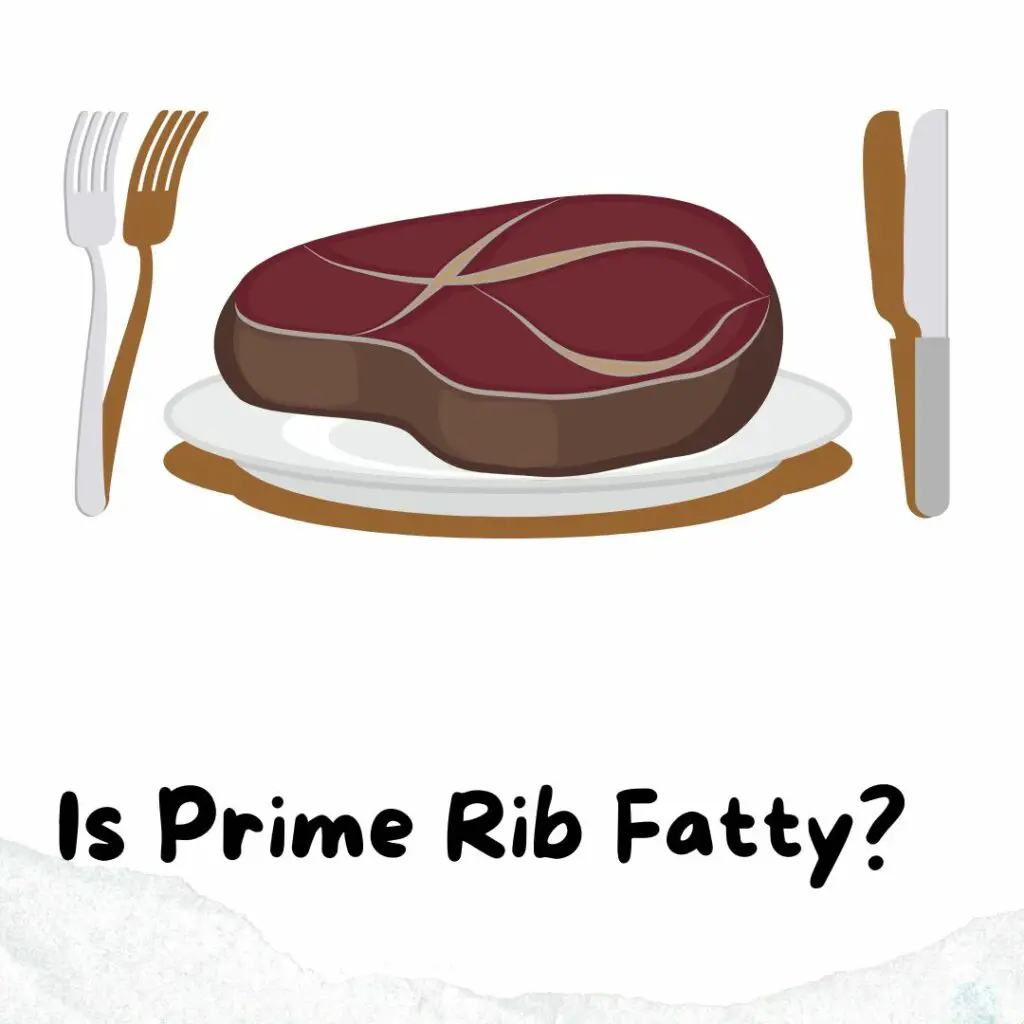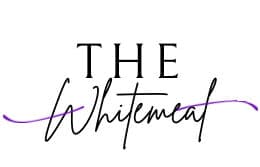Prime rib is a special cut of meat among beef lovers, and it reigns supreme during special occasions because of its succulent flavor and melt-in-your-mouth tenderness.
Still, some potential health-conscious diners might be biting their nails over the fat content in prime rib.
In this article, we’ll dissect the fat content in prime rib as well and highlight its place in a well-balanced diet.
Plus, we’ll serve up some tips for cooking prime rib to keep it as lean and healthy as possible without sacrificing that irresistible taste.

Is Prime Rib Fatty Or Lean?
A lot of people wonder whether prime rib is a fatty or lean cut of beef.
Understanding the composition of prime rib can be a little confusing, but the truth is, prime rib is essentially a fatty piece of meat.
If you can imagine, a slice of standing rib roast includes portions of the ‘eye’ of the rib, as well as the outer fat-marbled muscle (spinalis dorsi) often coined as the ‘cap’.
Diving into the nutritional content of the meat cut, 1 oz (28.3g) of prime rib contains approximately 98 calories, more than half of which originate from fat.
Specifically, an ounce brims with around 7.7g of total fat that constitutes roughly 10 percent of your recommended daily fat intake.
While this might not seem alarming at first glance, remember we’re discussing merely 1 oz!
Within this fat content, you’ll find around 3.1g saturated fats alongside monounsaturated and polyunsaturated fats making up the remainder.
It’s worth noting that monounsaturated and polyunsaturated fats are preferred for their health-positive qualities while saturated fats spark more debate.
The Calculations Unveiled
To fully grasp this nutritional data, it helps to break things down mathematically.
The standard Dietary Guidelines for Americans recommends capping your saturated fat consumption at less than 10 percent of your daily calorie intake.
For most adults subsisting on a daily caloric input ranging between 2000 – 2500 calories (women-men respectively), this translates to no more than 20-22g saturated fats per day.
Now consider this: only about one-seventh of an ounce (1 oz) from prime rib cuts contain saturated fats within the recommended guidelines (27.9 calories).
This means consuming roughly 6-7 oz lands you just on target – after which you’d surpass your daily limit.
However, this data becomes misleading when taken in context; after all, we rarely consume only an ounce or two with each meal! On average, adults ingest at least an eight-ounce serving size for meals involving prime rib cuts.
So what’s the takeaway?
While indulging in prime rib cuts every so often won’t wreak havoc on your health goals necessarily, especially given the fact that it is rich in vitamins and minerals, limiting consumption, trimming as much fat as possible before cooking (making sure to leave about 1 inch of the fat on the bone for flavor) and cooking using low fat techniques, or opting for leaner alternatives – think New York strip – could help keep that saturated fat count in check!
Prime Rib Fat Uses
If you’re like me, you already adore the tender, juicy and elegantly marbled Prime Rib.
But beyond its succulent taste lies a tale of fats – both monounsaturated and polyunsaturated varieties – that could change how you see this beloved cut.
Monounsaturated fat in prime rib is more than just a flavor enhancer.
It plays a critical role in maintaining your body’s overall health by helping to reduce bad cholesterol levels, thus lowering the risk of heart disease and stroke.
Likewise, the prime rib comes generously laced with polyunsaturated fats, which when consumed in moderation – about 15 percent of total daily calories – can lower the risk of heart ailments.
Still, with prime rib cut, it’s a delicate balancing act.
While it might be tempting to load up on your polyunsaturated fats exclusively from succulent slices of prime rib, doing so might have you overshooting your recommended daily intake of saturated fats — a surefire way to pile on unwanted calories and risk heart health.
So, how do we strike this balance?
The answer lies in diversifying your fat sources.
Look beyond the prime rib for healthier options like fatty fish (salmon or mackerel), flax seeds, walnuts and soybean oil for your quota of monounsaturated and polyunsaturated fats.
Which Is Fattier Prime Rib Or Ribeye?
When it comes to the age-old steakhouse meat duel: which is fatter between prime rib and ribeye, prime rib is generally fattier, thanks to its unique position on the cow’s body.
This decadently juicy cut consists of a large section from the primal rib, specifically chosen for its beautiful marbling of fat and muscle.
Think of it as a piece of meat that’s been blessed with an extra layer of flavor.
On the other hand, we have the succulent Ribeye steak.
It’s essentially a prime rib that underwent a slimming transformation – most of the fat and some muscle has been trimmed away – leaving you with a leaner but incredibly flavorful cut.
In short, whenever you find yourself pondering over this conundrum, remember this – while both cuts come from the same high-grade region, it’s the prime rib that takes home the crown for being magnificently marbled and indulgently fatty!

